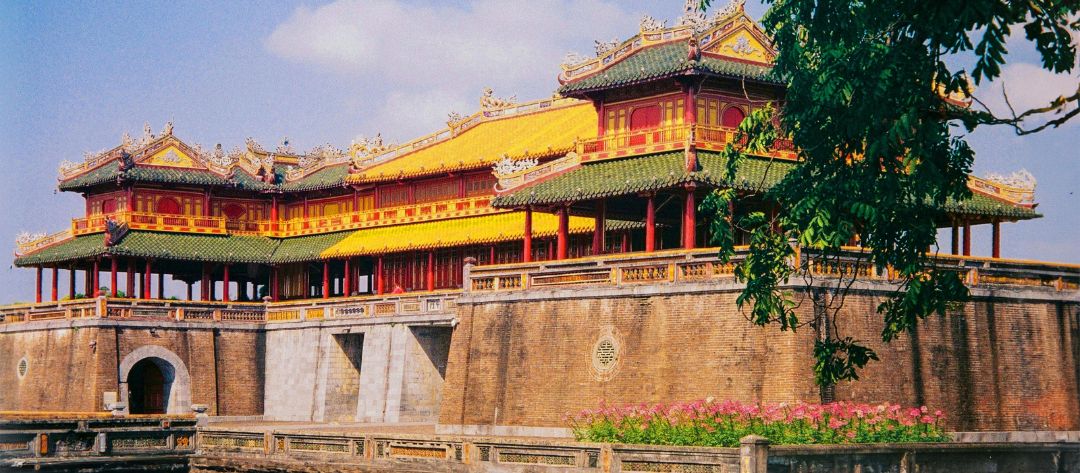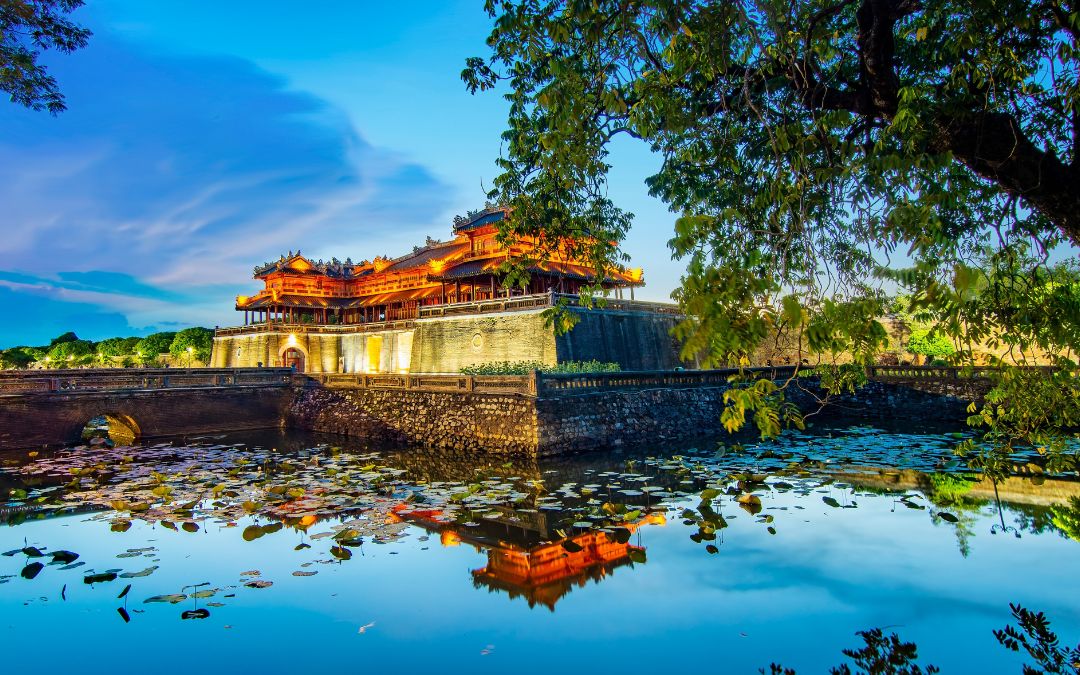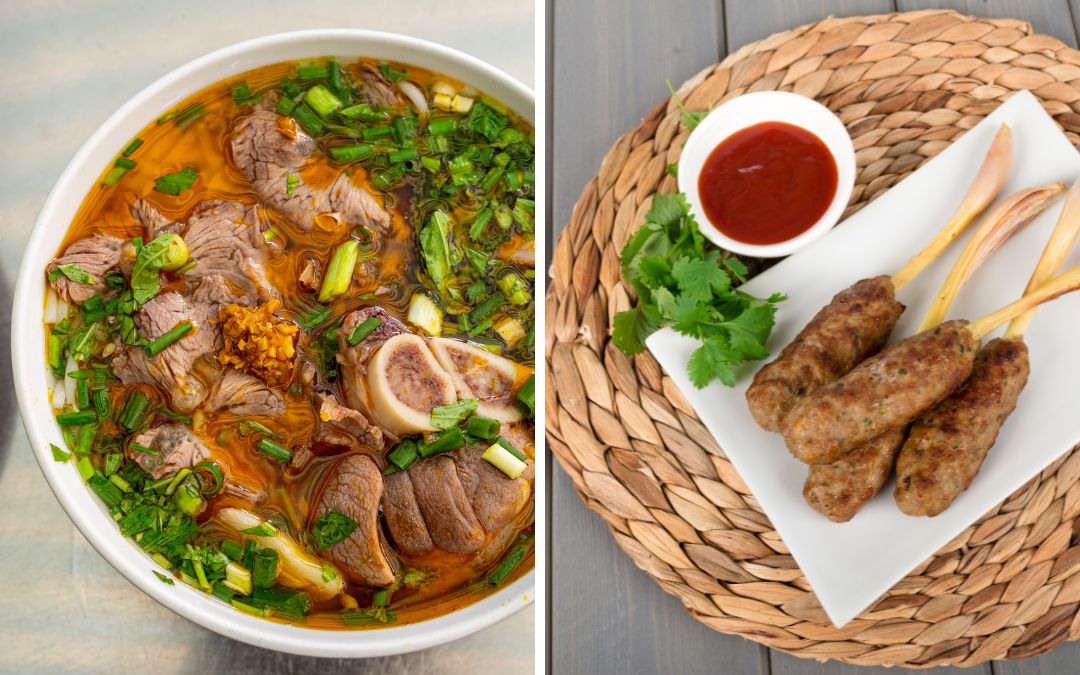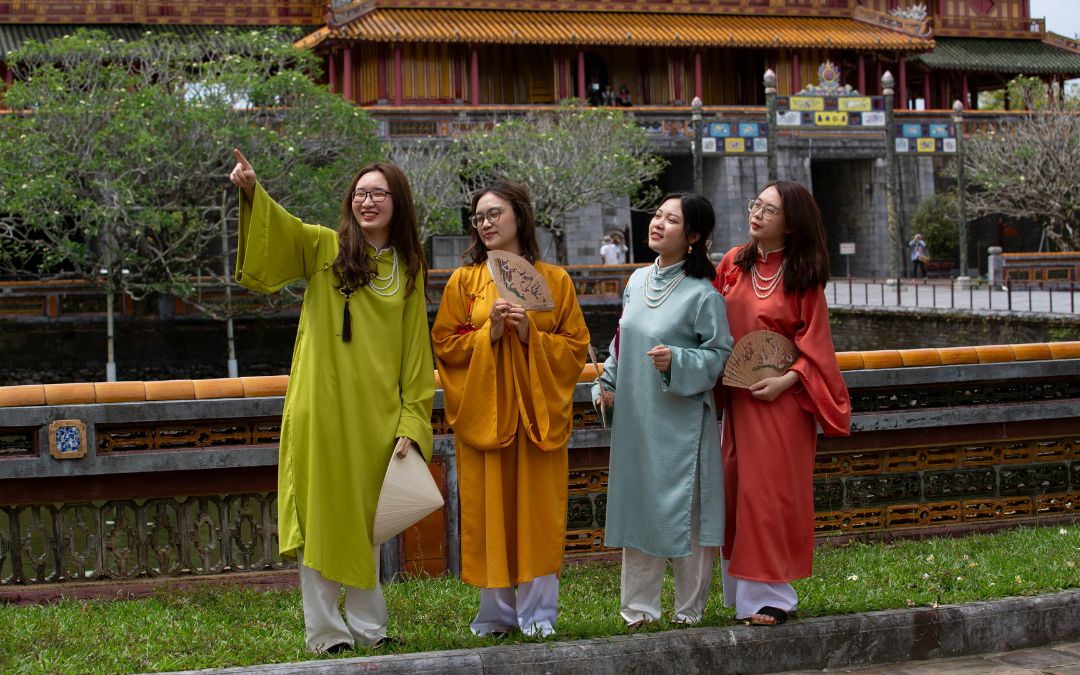The Hidden Treasures Of Hue Imperial Citadel: Your Ultimate Guide

Step into a world where history and beauty intertwine—the Hue Imperial Citadel, a UNESCO World Heritage site, beckons travelers with its enchanting allure. The Citadel’s charm lies not only in its grand structures but also in the stories they tell about Vietnam’s rich cultural heritage. From the majestic Imperial City to the tranquil gardens that invite reflection, every visit promises a unique experience.
In this ultimate guide, let’s delve into the wonders of the Hue Imperial Citadel, exploring its must-see attractions, cultural insights, and practical tips to ensure your journey through this historical site is truly unforgettable.
A Perfect Blend of History and Nature
Nestled alongside the serene Perfume River, the Hue Imperial Citadel is enveloped in lush greenery and tranquil landscapes. This idyllic setting enhances the Citadel’s charm, providing a breathtaking backdrop that beautifully contrasts the historical architecture.
Historical Significance
The Citadel stands as a monumental representation of Vietnam’s royal past. Built in the early 19th century, it served as the political, cultural, and religious center of the Nguyen Dynasty, Vietnam’s last royal family.
Featuring imposing gates, intricate palaces, and sprawling courtyards where emperors and their court once lived. Every corner of the Citadel is rich with history—from the grand ceremonial halls like Thai Hoa Palace to the Forbidden Purple City, which was once off-limits to all but the emperor and his closest aides.
Walking through these time-worn structures allows visitors to feel the weight of centuries past, where royal decrees were made and dynastic ceremonies unfolded.
>> Read More: Explore These 14 Vietnam Historical Landmarks To Learn About The Country’s Intriguing Past
Nature’s Influence
What truly sets the Hue Imperial Citadel apart is its seamless integration with the surrounding natural landscape. Nestled along the banks of the scenic Perfume River, the Citadel enjoys a tranquil setting that enhances the grandeur of its historical significance. The river’s gentle flow adds a sense of calm, creating a peaceful contrast to the imposing architecture.

Hue Imperial Citadel beside the Perfume River
The Citadel’s layout is meticulously designed according to feng shui principles, with every structure thoughtfully positioned to maintain harmony between the built environment and nature. This approach ensures that the Citadel’s majestic palaces and ceremonial halls coexist with the natural world in a balanced, intentional way.
The expansive grounds of the Citadel offer a blend of architectural splendor and serene natural elements. Courtyards are adorned with trees and plants, while lotus ponds and central waterways add to the tranquil atmosphere. These features attract local wildlife, including birds and fish, further enhancing the connection between history and nature.
Visitors can easily find moments of peace within the Citadel’s grounds, whether by relaxing near a lotus pond or walking through shaded pathways that wind toward hidden temples and pagodas. The harmonious balance of grand architecture and natural beauty creates a unique experience where history and nature blend effortlessly.
How To Get There
Reaching the Hue Imperial Citadel offers a variety of transportation choices tailored to your budget and comfort level.
By Air
For those looking to save time and enjoy a relaxed journey, flying is the best option. Numerous domestic airlines operate flights from major cities such as Hanoi and Ho Chi Minh City to Phu Bai Airport in Hue.
Once you arrive at Phu Bai Airport, you have two convenient options to get into the city: take the airport shuttle (priced at approximately 1.62 – 2.03 USD per person) or hire a taxi (costing around 10.14 – 14.19 USD per trip).
By Train
Ticket prices range from about 16.22 USD to 3649 USD for a seat, with higher fares for the SE3 and SE1 trains that offer sleeping compartments and air conditioning.

If you’re on a budget, consider taking a train from other provinces to Hue.
By Bus
Long-distance buses are also available from Hanoi (16.22 – 20.27 USD per ticket), Ho Chi Minh City (24.33 – 50.68 USD), or Da Nang (5.47 – 6.08 USD). However, this option will take significantly longer.
If you want to soak in the picturesque scenery of this dreamy region while traveling, renting a bicycle, motorbike, or cyclo is a delightful choice.
What To See
The Hue Imperial Citadel is a treasure trove of historical and cultural wonders. Here are some must-see attractions that capture the essence of this magnificent site.
Ngo Mon Gate: The Grand Entrance
This is the iconic main entrance to the Imperial Citadel, where emperors would greet their subjects and hold grand public events. The gate itself is a towering, five-story structure adorned with ornate carvings and symbols of imperial power. The upper floors were reserved for the emperor to observe military parades and state functions. This majestic gate is an essential first stop, offering a grand introduction to the splendor of the Citadel.
Thai Hoa Palace: The Hall of Supreme Harmony
Once inside, you’ll find Thai Hoa Palace, one of the most significant buildings within the Citadel. This hall was where the emperor held important ceremonies, including coronations and royal audiences. Its grand design features red lacquered columns, golden details, and a regal throne at its center.

The Thai Hoa Palace and the courtyard
As you walk through the palace, you can imagine the royal events that once took place here. The intricate details and imperial symbols throughout the palace give you a deep sense of Vietnam’s royal history.
Forbidden Purple City: A Royal Enclave
Hidden within the heart of the Citadel is the Forbidden Purple City, a once-exclusive area reserved for the emperor, his family, and trusted servants. This section of the Citadel was off-limits to anyone without royal permission.
While much of the Forbidden Purple City was damaged during the war, ongoing restoration work brings to life the elegance and privacy that once surrounded the imperial family’s inner life. Wandering through its remains gives you a glimpse of where the emperor lived and worked in seclusion.
Dien Tho Residence: The Palace for Emperor’s Mother
Dien Tho Residence was the home of the emperor’s mother and is one of the most well-preserved areas in the Citadel. This beautiful complex includes a series of pavilions, halls, and courtyards surrounded by tranquil gardens. The residence offers insight into the daily life of the imperial women, and its peaceful atmosphere provides a relaxing contrast to the grandeur of the other buildings. The graceful architecture and serene setting make it a hidden gem within the Citadel.
Hien Lam Pavilion: A Tribute to the Emperors
The three-story Hien Lam Pavilion stands as a monument dedicated to the Nguyen emperors and their contributions to Vietnam’s history. Built in a classical Vietnamese style, the pavilion is richly decorated and surrounded by beautifully maintained gardens. Visitors often come here to pay tribute to the imperial ancestors, making it a place of reverence and reflection.
Next to the pavilion are the Nine Dynastic Urns, massive bronze urns representing each emperor’s reign. These impressive pieces of craftsmanship are a highlight for those interested in Vietnam’s rich cultural heritage.
The To Mieu Temple Complex: A Sacred Place

Located near the Hien Lam Pavilion, The To Mieu is dedicated to the worship of past emperors
The To Mieu Temple Complex is where tablets of the Nguyen emperors are placed, and ceremonies are held to honor their spirits. The architecture here is a fine example of traditional Vietnamese temple design, with dragon motifs, red pillars, and elaborate altars.
It’s a spiritually significant site, and many visitors come to appreciate its peaceful atmosphere and cultural importance.
Truong Sanh Residence: The Garden of Longevity
Truong Sanh Residence (also known as the Palace of Longevity) is a beautifully serene area located within the Citadel grounds. Initially built as a retreat for the emperor, it was later used as a residence for the emperor’s mother.
Surrounded by lush gardens and lotus ponds, this area provides a tranquil escape from the bustling parts of the Citadel. It’s an ideal spot for a quiet stroll or to simply sit and soak in the peaceful surroundings.
Royal Theater: A Cultural Experience
For those interested in Vietnam’s performing arts, the Royal Theater is a must-see. It is one of the oldest theaters in Vietnam and was where emperors and their court were entertained with traditional Nha Nhac (court music), dance, and performances.
Visitors can still watch live performances of these ancient art forms today, offering a cultural immersion into Vietnam’s royal entertainment traditions. Attending a show here adds a unique layer to your experience, blending history and the arts.
Cultural Experiences
The Hue Imperial Citadel is not just a historical site; it’s also a hub of cultural richness that allows visitors to experience Vietnam’s imperial legacy firsthand. Whether you’re a history buff, a lover of traditional arts, or simply curious about local customs, the Citadel offers a wide range of cultural experiences that bring the past to life.
Hue Imperial Citadel Night Tour
One of the most magical ways to experience the Citadel is through the Hue Imperial Citadel Night Tour. Held in the evenings, this guided tour illuminates the Citadel’s historical structures, giving visitors a unique view of the complex under soft lighting, which highlights its grandeur in a whole new way.
During the night tour, you can:
- Walk through the Citadel’s iconic gates under the glow of lanterns and soft lights.
- Watch royal performances, such as Nha Nhac court music and traditional dances, bringing the past to life in an atmospheric setting.
- Stroll through beautifully lit gardens and courtyards, providing a peaceful and romantic ambiance.
- Enjoy a water puppet show, a traditional form of Vietnamese folk art.
- Admire the grandeur of the Thai Hoa Palace and Ngo Mon Gate as they shimmer against the night sky.
The night tour offers a captivating combination of history, culture, and visual beauty, making it a must-see for those looking to experience the Citadel in a quieter, more intimate setting.

You can avoid the daytime crowds while enjoying a different perspective of this iconic landmark.
Tip: The night tour usually takes place between 19:00 and 22:00, but be sure to check current schedules and availability in advance.
Hue Traditional Festivals
If you’re lucky to visit during one of the city’s traditional festivals, you’ll be able to witness even more of Hue’s rich cultural heritage. The Citadel often plays a central role in the celebration of events such as:
- Hue Festival: Held every two years, this event showcases traditional performances, parades, and exhibitions, with the Citadel serving as one of the main venues.
- Lunar New Year (Tet) Celebrations: During Tet, the Citadel is alive with festivities, including ancestral worship ceremonies, traditional dragon dances, and the lighting of lanterns.
- Vu Lan Festival: Also known as the “Hungry Ghost Festival,” this is an important spiritual occasion where locals pay tribute to their ancestors.
These festivals offer a unique opportunity to witness the vibrant cultural life that continues to thrive in Hue.
Royal Ceremonial Reenactments
The Citadel frequently hosts royal ceremonial reenactments, where visitors can watch actors dressed in imperial costumes recreate important rituals from the Nguyen Dynasty. These include enthronement ceremonies, royal processions, and ancestral worship rites.
The grandeur of these events, complete with traditional music, royal banners, and choreographed movements, provides a glimpse into the formalities and customs that shaped the life of the Vietnamese emperors.
Where to Watch: Ceremonies are often held near Ngo Mon Gate or Thai Hoa Palace and are announced ahead of time.
Traditional Hue Cuisine
Your visit to the Citadel wouldn’t be complete without experiencing Hue’s royal cuisine, which is renowned across Vietnam for its balance of flavors and artistic presentation.
In the past, meals prepared for the emperors were elaborate feasts featuring intricately arranged dishes using the finest local ingredients. Today, many restaurants and food stalls near the Citadel serve authentic Hue dishes that reflect this culinary tradition. Some must-try specialties include:
- Bun Bo Hue: A spicy beef noodle soup.
- Banh Khoai: A crispy savory pancake filled with shrimp and pork.
- Nem Lui: Grilled lemongrass skewers served with rice paper and fresh herbs.

Do not miss Bun Bo Hue and Nem Lui
For a full cultural experience, some places offer royal-style dining, where you can enjoy a meal presented as it would have been for the emperor, complete with traditional music and décor.
> See Tour: A Food Lover’s Tour of Vietnam
Nha Nhac – Vietnamese Court Music
One of the most significant cultural experiences inside the Citadel is a live performance of Nha Nhac, the traditional court music that dates back to the Nguyen Dynasty.
Recognized as a UNESCO Intangible Cultural Heritage, Nha Nhac was performed during royal ceremonies, important festivals, and celebrations. Today, you can still witness this ancient music in its original setting, often accompanied by traditional dance and costumes. Performances are held at the Duyet Thi Duong Royal Theater, offering an immersive experience of Vietnam’s royal court life.
Tip: Be sure to check the schedule for Nha Nhac performances when planning your visit, as the shows are not held every day.
Practical Information and Tips
To ensure a smooth and enjoyable experience at the Hue Imperial Citadel, here’s a handy guide with all the essential information you need, from ticket prices to the best times to visit.
Opening Hours
This place is open to visitors daily, from 8:00 to 17:30 in the Spring and Summer, from 7:00 to 17:00 in the Fall and Winter. The Night Tour usually runs from 19:00 to 22:00, depending on the season. Make sure to check ahead for current schedules.
Tip: If you’re visiting during the summer, try to visit in the early morning or late afternoon to avoid the midday heat.
Ticket Prices
Here are the standard ticket prices for the Hue Imperial Citadel:
- Adults: 200,000 VND (approx. $8.50 USD)
- Children (7–12 years old): 30,000 VND (approx. $1.30 USD)
For the Night Tour, ticket prices may vary, typically around 150,000–200,000 VND (approx. $6.06 to $8.50 USD) for adults.
Tip: Combination tickets are available if you plan to visit other landmarks in Hue, such as the royal tombs and pagodas. This can save you money if you’re exploring multiple sites.
Best Time to Visit
The best time to visit Hue and the Imperial Citadel is from March to April and September to November when the weather is mild and comfortable for sightseeing. Hue experiences rainy seasons from October to December, so pack appropriately if visiting during this time.

Spring and Summer are ideal for visiting Hue Imperial Citadel
Dress Code
As the Hue Imperial Citadel is a historical and cultural site, visitors are encouraged to dress respectfully. Due to the citadel’s size and sprawling grounds, comfortable walking shoes are highly recommended.
Tip: Light, breathable clothing is best for the hot and humid weather, but bring a hat and sunscreen for sun protection. Carrying an umbrella or rain jacket is also helpful during the rainy season.
Getting Around
The Citadel covers a large area, and exploring on foot is the best way to appreciate its architecture and atmosphere. Plan for around 2-3 hours to fully explore the main attractions.
Tip: There are electric shuttles available for visitors who prefer a more relaxed experience or have mobility issues. These shuttles take you around the major points inside the Citadel for a small fee.
Facilities and Amenities
Restrooms: There are clean and well-maintained restrooms available inside the Citadel at key locations such as near the Thai Hoa Palace and Ngo Mon Gate.
Food and Drinks: Small food stalls are located near the main entrance, offering local snacks, bottled water, and beverages. For a more substantial meal, there are nearby restaurants just outside the Citadel serving traditional Hue cuisine.
Tip: Bring a reusable water bottle, especially during the hotter months, as you’ll be walking a lot.
Photography
The Citadel is a photographer’s dream, with beautiful ancient architecture and tranquil landscapes. Photography is allowed, but some specific areas, such as temples, may have restrictions.

Enjoy the chance to wear unique customs and take pictures with your friends
Tip: For the best photos, try to visit during the golden hour—early in the morning or just before sunset. The night tour also offers stunning opportunities to capture the illuminated structures.
Guided Tours
Guided tours are available for those who want deeper insights into the Citadel’s history and significance. You can hire local guides on-site or book tours in advance through your hotel or a tour agency.
Tip: Audio guides in multiple languages are available for rent, allowing you to explore at your own pace while still learning about the Citadel’s rich history.
Keynotes
- Plan Your Route: The Citadel is vast, so plan out which attractions you want to visit first, such as Ngo Mon Gate, Thai Hoa Palace, and the Forbidden Purple City.
- Bring Cash: While most places accept cards, it’s a good idea to have some Vietnamese Dong (VND) for smaller purchases, snacks, or souvenirs.
- Mind the Weather: Hue can be hot and humid, so take regular breaks in the shaded gardens or near the lotus ponds.
>> Read More: Why You Will Love Vietnam Local Tours For Exploring This Country
In Short
Exploring the Hue Imperial Citadel is an immersive journey into Vietnam’s rich history and vibrant culture. To enhance your visit, let Asia Pioneer Travel craft unforgettable adventures tailored just for you. With years of experience in the travel industry, we specialize in delivering insights that illuminate the captivating stories and significance of the Citadel.
Our knowledgeable local guides guarantee authentic experiences that truly reflect the essence of Hue and its heritage. We not only share intriguing anecdotes but also highlight the architectural marvels and the intricate symbolism embedded within the structures. Whether you’re seeking unique cultural encounters—such as traditional performances and culinary delights—or breathtaking landscapes, Asia Pioneer Travel works closely with you to tailor your journey according to your budget and preferences.
Contact Asia Pioneer Travel and let us enrich your visit to Vietnam and create lasting memories that will stay with you long after your journey ends.




